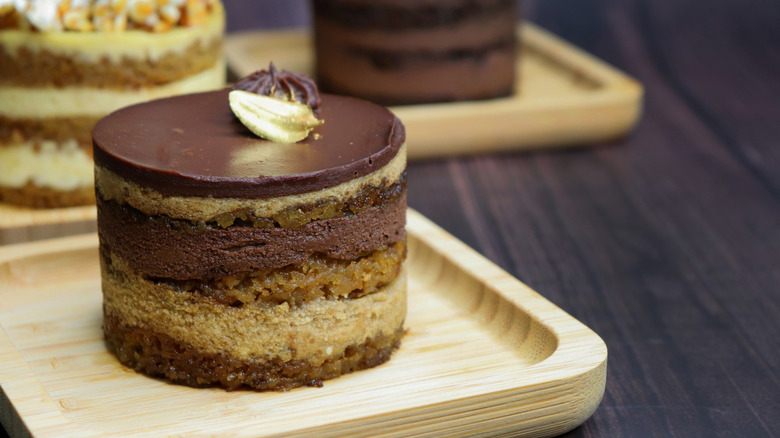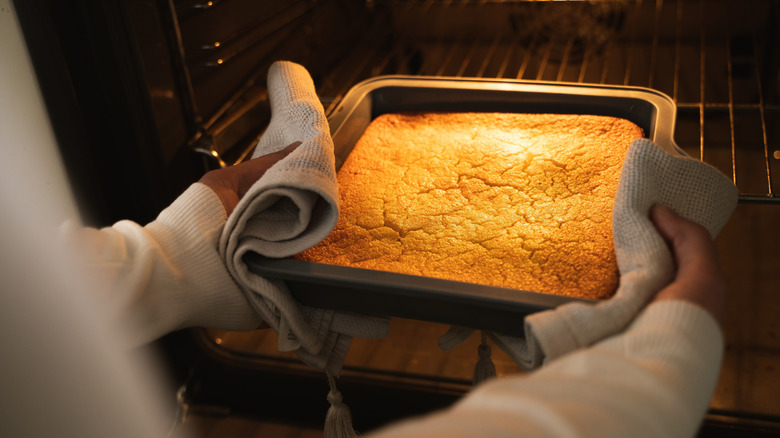Why Gluten-Free Baked Goods Need More Time In The Oven
If you've ever made gluten-free baked goods thinking you could just follow the baking instructions from, say, your go-to orange walnut bundt cake recipe, only to remove your bake from the oven and discover the texture is less than ideal, you're not alone. Food Republic spoke to Sofia Schlieben, Corporate Pastry Chef at JF Restaurants, who confirmed that gluten-free baked goods typically require more time in the oven to achieve the desired texture.
Unlike regular flour, gluten-free flour is usually made from a combination of flours, starches, and binders (typically, xanthan gum or guar gum). This creates a batter that is more moisture-rich than those made with glutinous flours. According to Schlieben, this explains why gluten-free baked goods take longer to bake and set than those containing gluten. It's also the reason your baked goods may taste mushy or gummy if you remove them from the oven too soon.
When it comes to baking gluten-free items, Schlieben takes a low-and-slow approach, using a lower temperature and extended bake time. "For example, if a recipe calls for 350 [degrees Fahrenheit] for an hour, I'll try baking at 325 [degrees Fahrenheit] for about 1 hour and 15 minutes, then check for doneness. If it still needs more time, I'll add another 10–15 minutes as needed," she explained.
Other things to keep in mind when timing gluten-free bakes
That said, figuring out when a gluten-free baked good is done can be tricky. While there are specific steps you can take to improve the texture of gluten-free baked goods, such as selecting the best gluten-free flour for baking, their higher moisture content means they may still have a slightly gummy texture when done. Hence, it's so easy to accidentally overcook gluten-free bakes, taking them from mushy to dry in the blink of an eye.
Just as gluten-free baked goods require a longer baking time, they also need extra time to set once they've been removed from the oven. To determine whether your gluten-free baked goods are done, start by checking the edges. If they're pulled away from the edge of the pan, that's a good sign. If you're baking a cake or loaf, you can also gently touch the center with your finger or a spoon to check for doneness. If it gently springs back, then you know that your cake is ready. If it doesn't spring back, then that's your sign to put it back into the oven.
Either way, allowing your gluten-free bakes to rest for 10-15 minutes in the pan before placing them on a wire rack allows the gluten-free flour to reabsorb moisture. This helps the structure form and improves the overall texture of your baked goods.


